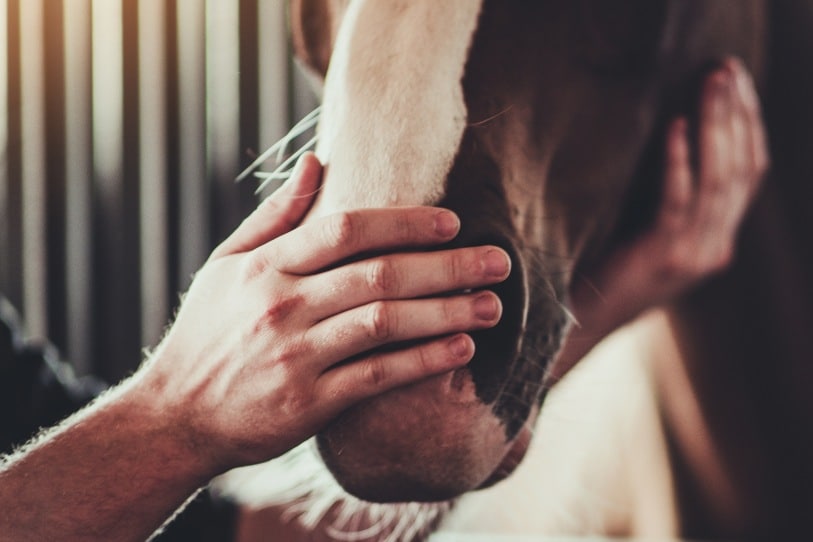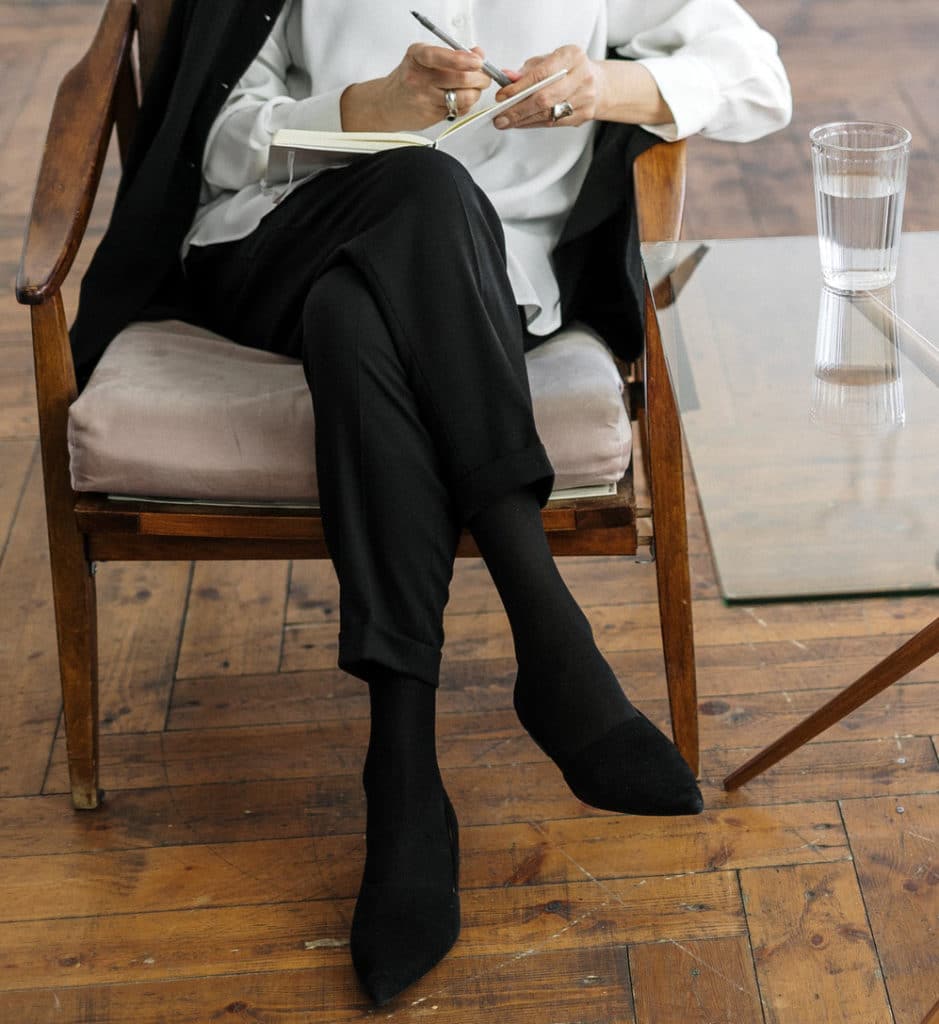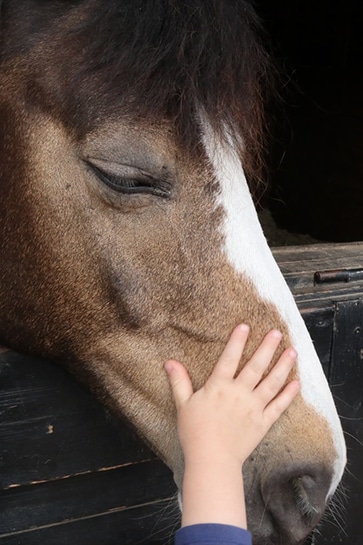


Animals have been used for therapeutic purposes throughout the course of human history. It wasn’t until the 1960s that formal research of animals for therapy was done. Now, one of the most common forms of animal-assisted interventions to treat mental health disorders involves horses, called equine therapy. At D’Amore Healthcare, we can help you take control of your mental health with this approach.

Our mental health professionals at D’Amore Healthcare analyze your entire medical and psychological history prior to receiving treatment. Since no two mental health issues are exactly the same, we use individualized treatment plans custom to your needs. Our residential mental health treatment center in Orange County provides a safe and comfortable environment with around the clock care. We are pleased to offer equine therapy and have witnessed how working with horses can be effective in treating conditions.
Equine therapy is also known as equine-assisted therapy (EAT), equine-assisted learning (EAL), and equine-assisted psychotherapy (EAP). This therapy involves horse activities to promote physical, emotional, and occupational growth for individuals who suffer from certain mental disorders. Equine therapy helps an individual build their self-confidence, self-efficiency, communication, trust, impulse control, social skills, and other areas. Horses help build these skills because they have similar behavior patterns as humans.
Building a connection with a horse comes easy for most individuals because of these similar behaviors. Equine-assisted activities (EAA) have been recognized in the mental health field by most major countries because of its effectiveness.
Equine therapy dates back to when horseback riding was used for therapeutic reasons in ancient Greek literature. In 600 B.C. The therapeutic value of riding was documented by Orbasis of ancient Lydia. Fast forward to 1946, and equine therapy was presented in Scandinavia following poliomyelitis.
Therapeutic riding started in the United States in 1960, with the creation of the Community Association of Riding of the Disabled (CARD). Following that was the Professional Association of Therapeutic Horsemanship International (PATH Intl.) in 1969. Riding for the disabled created a means of motivation for education and therapeutic benefits.
Other animals such as dogs, cats, elephants, and dolphins, are also used for therapeutic reasons. Horses became the most popular animal for therapy since they give immediate feedback to the rider’s actions. Moreover, they also have the ability to mirror the rider’s feelings. A horse’s size makes them intimidating, and forces the individual to gain trust while being around them.
The types of equine therapy sessions are made up of two basic structures called triangle or diamond.
The individual, therapist, and horse engage in therapy sessions. The therapist sits back and observes the individual's actions with the horse. Those actions are then interpreted to the individual so they can recognize how behavior affects the animal. For example, some actions demonstrated by the horse may be ears down, or following.
The individual, therapist, horse, and riding instructor engage in therapy sessions. The riding instructor sits back and observes the horse’s behavior. They are there to interpret the movements of the horse to ensure everyone’s safety. The therapist watches the individual's actions with the horse and its behavior towards the individual.

Equestrian therapy can include more than just riding the horse. The therapist sets goals for the individual during the session that may not involve touching the horse at all. Interactions with the horses can include actions like putting on the halter or leading them to a designated area. To get the most out of the sessions, the individual will try to accomplish each goal the best they can.
Communication occurs between the individual and the horse, as well as the individual and instructor. The individual will talk about their thought process, ideas, and problem-solving they use for each task. Discussing the process allows them to improve their language skills. Listening to the instructor helps them improve following directions and asking questions.
This learned skill is especially helpful for individuals with anxiety. Individuals with anxiety are typically stuck worrying about the past or thinking about a tragic future. So, this exercise pushes an individual to be present and focus on a single task.
Occupational therapists who teach equine-assisted therapies can simply adapt to cognitive behavioral therapy. The therapist can make decisions about the processes and techniques used in each session. The main methods implemented are cognitive behavioral therapy (talk therapy), practicing activities, activity scheduling, and play therapy.
This therapy can be used to treat numerous mental health issues. Horses sense danger and respond with a heightened awareness of their surroundings, so fleeing a situation would appear dangerous to them. Throughout this technique, the individual would practice remaining calm and taking responsibility for their own thoughts. Placing focus on the horse rather than themself can reduce their anxiety and change automatic thoughts.
It is common to avoid challenging and uncomfortable situations when battling a mental health issue. This technique allows the individual to choose the activity that is out of their skill level. The therapist helps by talking about stimulating thoughts or feelings that arise from the activity. Exercises involve coordination, planning, and active communication like bathing or feeding the horse, for example.
Many individuals with mental health conditions might avoid chores and responsibilities. Developing and planning a schedule to take care of the horse throughout the day can teach them responsibility and flexibility. This experience or feeling of responsibility can bring structure back into the individual’s life.
Horse behavior can be similar to humans including instincts of play, curiosity, freedom, and social drive. Play therapy inspires building relationships and setting limits. Storytelling promotes making stories about what the horse is thinking and interpreting emotion. This technique encourages developing language and creativity skills.
Equine therapy is frequently used in family or group therapy and team-building exercises. The horse often shows interpersonal behavior, and sessions are goal-oriented. This allows the group to work together to achieve common goals.
A therapy horse can help you overcome a mental health disorder. For conditions such as anxiety, ADHD, depression, and PTSD, we provide equine therapy to those who would benefit greatly from it. Here in Orange County, our inpatient mental health facility offers individualized treatment so you can achieve mental wellness.
Give us a call if you or a loved one is struggling to defeat a mental health issue.

Jamie Mantel is a Licensed Marriage and Family Therapist, with a Psy.D. in psychology. Jamie has worked for non-profits for over 20 years working with agencies, as well as her private practice in Huntington Beach, California.